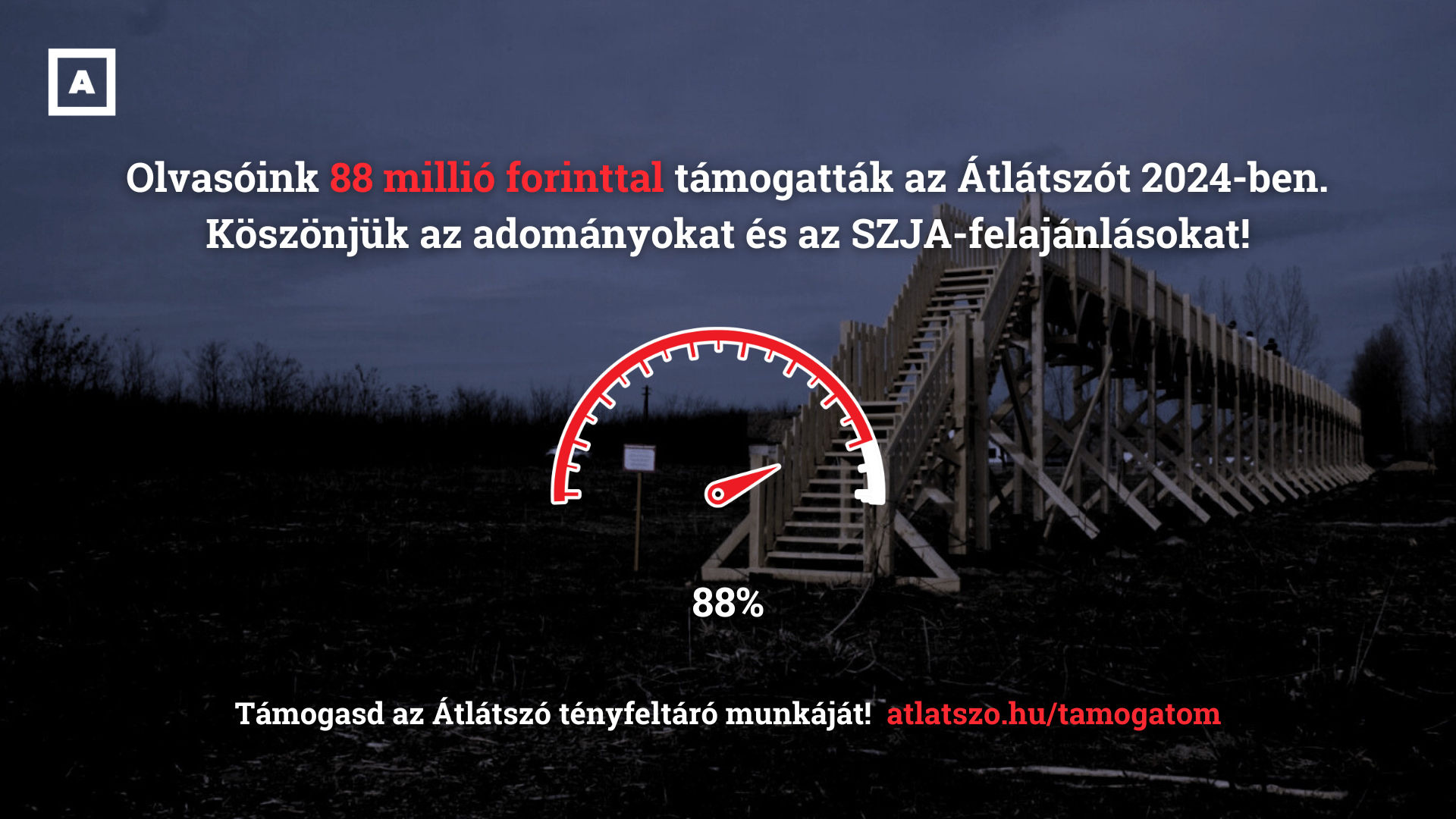
Putin, the man who wasn’t even there
In the following, we will summarise how the popular Krónika news show, which airs at noon every day on the...
In early April, the Hungarian public media’s online news site, hirado.hu, introduced a fake news monitoring series. Two months have passed since the series was first launched, and this allows for sufficient time to take a detailed look at the techniques being deployed by the authors and editors of the series, how they try to construct a new narrative about fake news.
By Ágnes Urbán
The counter of items reviewed in the fake news-monitoring series published on hirado.hu, the online news site of the Hungarian public media, is now up to No. 28. In other words, a new article reviewing some alleged fake news item has been published every two days on average. It is important to stress that, in and of itself, the underlying objective is a worthy one. It is only natural that a public service media provider would want to take action against fake news and to try to uncover the truth about the underlying matters in order to inform and educate the wider public. At the same time, however, it is also widely known that the Hungarian public media’s relationship to factuality and professionalism is rather distant. Hence, it is worthwhile to examine how the fight against fake news, which would be a praiseworthy effort in another context, is being distorted by such a propaganda institution.
What is striking already at first glance is that the fake news monitoring series features a mix of items published on actual fake news sites and of articles published by independent and critical media that obviously do not seem like fake news at all; in fact, the series even included as alleged fake news statements by opposition politicians. By contrast, some of the examples covered were obviously genuine fake news items. Thus, for instance, the government will not in fact stop paying pensions, as the prominent fake news site Ötpercpihenő claimed, and clearing this up is important and useful. Some of the links leading to untrue news covered by the series no longer work, which makes it impossible to verify whether such news had in fact been disseminated in the first place – but if they were, it is likely that the public media’s coverage is correct in asserting that we can relax because reports suggesting that those over 65 will automatically lose their driver’s license were simply untrue. One key characteristic of fake news sites is that they suddenly spring out of nowhere and then disappear just as quickly, which makes it difficult to take action against them.
At the same time, the series also features elements in which a fundamental presumption of good faith on the part of its creators is simply untenable. The article entitled Fake News No. 9: The Hungary Helps Program May End does not include a link to the source article, but a quick search will reveal that it more than likely refers to an article published on the online site of the critical weekly HVG, which was entitled Orbán May End the Hungary Helps Program. In reality, however, HVG did not write this article without a basis in fact. On the contrary, it was written based on information published on the official government website, kormany.hu. In light of the fact that the bill in question aimed to rescind certain acts of the government concerning the program in question, the assumption that the government might want to end the program in its entirety was not baseless speculation. In other words, the press was merely doing its legitimate job in trying to gauge what the government might be up to based on bills submitted by the latter itself. This does not qualify as fake news by any stretch of the imagination. It may well be that the reason why the hirado.hu article did not feature a link to the article referenced was that it would have allowed the readers to check out the underlying story themselves by following the link, and this would have revealed that the public media’s report about the article was slanted. Removing the link prevented readers from finding out that the article in question had been based on the government’s own proposed policies.
On the whole, the fake news series devotes a substantial number of items to analysing articles published in independent media. This focus seems designed to serve as an instrument of political communication rather than a genuine tool for spreading awareness about and combatting the dissemination of fake news. What’s most striking when it comes to these articles is that the fake news label is assigned by hirado.hu without the performance of any real fact-checking. The actual refutation of the items in question with fact-based analysis is replaced by the simple assertion that the articles have been refuted, which is supposedly substantiated by the fact that the articles in question have been labelled as fake news. This is especially dissonant in situations when extensive and well-researched reports are simply written off by the public media as fake news, without any evidence in support of the claim.
In reaction to a factually well-substantiated report by Qubit, for example, the public media reacted with an item entitled as follows: Fake News No. 5: Mass testing could save lives. The public media’s discussion of the claims in the report at issue was mostly centred on the notion that Qubit is a left-liberal outlet and part of the same media group that includes one of the leading critical online newspapers, 444.hu. By way of “refutation”, the public media’s article also quotes the Hungarian surgeon general, Cecília Müller, who argued that the curve can be flattened simply by following the relevant standards of hygiene, as well as a comment by the head of the WHO’s Budapest office, which – ironically enough – actually supported Qubit’s claims since it highlighted the importance of testing in all cases where the suspicion of Covid19 arises, as well as in the case of all persons who have been in contact with someone who tested positive.
A similar disproportionality is manifest in Fake News No. 23: “Patients at the Korányi hospital are forced to take cold baths in rubbish bins”, which reacts to a well-documented report published on 444.hu. The original report included both photographic and video evidence. The article showed how difficult it was to follow standards of personal hygiene in those rooms of the Korányi hospital that lacked toilets and sinks in a situation when the quarantine regulations compelled the patients to stay in their rooms and thus deprived them of the access to the toilets and washrooms located outside their rooms. If that report was untrue, it would have been easy to refute (by reporting, for example, precisely and with photo documentation if and how many rooms were actually affected by this problem and how many other hospital rooms feature their own toilets and bathrooms, by contrast, and what solutions were being used by the hospital to remedy the lack of these basic hygiene facilities in the rooms that lack them.) Rather than trying to refute the claims in the impugned article with actual evidence, the public media found it sufficient to cite a terse statement by the State Healthcare Provision Centre, which said that everything was in order but failed to explain how the photo documentation published on 444.hu could paint a completely different picture of the realities on the ground.
Another striking and revealing aspect of the list in the series of fake news collected by the public media are items that subsequently went missing. According to the URL, item No. 18 in the series originally seemed to refer to a report saying that dying patients had been sent home without being treated was fake news. However, this item was removed and a few days later a different article with a different URL was published as No. 18. The decision to vacate hospital beds and to send their occupants home was also well-documented in the Hungarian media and led to widespread outrage. It would be interesting to know what the public media had initially classified as fake news in this context and even more importantly, it would be relevant to know why they subsequently deleted the article from their list of fake news.
The problem of fake news has been around for a while now, but the series launched by hirado.hu has approached it from a new angle: What we see here is the emergence of fake news as a narrative. The articles claim to inform and guide readers about the fake news phenomenon and to outline a proper way of interpreting the articles assigned to this category. This was probably deemed necessary because it is likely that on account of the epidemic there was a greater than usual openness among Hungarian media consumers – who are normally highly divided and regimented in terms of their media consumption behaviour, mostly sticking with the media sources that align with their political preferences – to consult other media sources and to seek out more news about the corona epidemic. That is pro-government media consumers were likely to read more independent news sources and, conversely, opposition media consumers were more likely to look at pro-government news sources.
It is very likely that the heightened effort to undermine the public credibility of independent media gained steam in response to these circumstances, and that the label of fake news was seen as an effective tool to this end. Already at the onset of the crisis, pro-government commentators uttered increasingly harsh statements about independent journalists, and it appears that the pro-government media are continuing to follow this line when reporting about independent media outlets.
The communication decision-makers in the governing party recognised that the consumers’ assessment of what constitutes fake news was more likely to be a matter of faith than of the assessment of actual facts. When media consumers encounter a lot of articles that do not fit with their own preconceived notions and personal political narratives, they are likely to identify these as fake news, which will lead to a cognitive dissonance where inconvenient facts are simply filtered out. This allows the readers to avoid reassessing their own opinions and to avoid a confrontation that would potentially force them to admit that they might have been wrong or that the opinion leaders whom they respect might have given them explanations that oversimplified a given situation. If articles that propose alternative perspectives on these issues are simply classified as fake news, then this exempts them from reflecting on and potentially reassessing their own viewpoints.
And that is exactly the state of affairs that the governing party is interested in perpetuating. The sphere of public communication in Hungary is organised in a way that clearly favours Fidesz, and not only because of its clear dominance in the media but also because a substantial monolithic bloc of the public sides with the government and uncritically accepts its messages. With such a captive audience, it is easy to label any type of information that does not mesh with the government’s own communication as fake news, and that is in fact exactly what a segment of the consumers is looking for.
At the same time, this will serve to freeze public discourse even more intensely along the partisan and communication fault lines that characterise Hungarian society today, even though what would be needed would be precisely the opposite, namely the increased flow of information across the partisan divide, the critical assessment of outcomes and public debates about conflicting scenarios. Using the fake news label allows for a highly reductionist operation of public discourse, where everything is boiled down to a black or white issue, expert debates can be ignored and even fact-based investigative reports can be discredited when they conflict with the dominant narrative. Absurdly, Hungary has become a place where the public service media actively contribute to this reductionist approach by suppressing facts and substantive debates in public discourse.


In the following, we will summarise how the popular Krónika news show, which airs at noon every day on the...

Az alábbiakban összefoglaljuk, hogy a sokak által hallgatott, a Kossuth Rádióban minden délben jelentkező Krónika c. hírműsor hogy számol be...

As part of our broader analysis of how the election campaign is covered in the television news, it seemed evident...

The attack on Ukraine has led to a widespread outrage in Hungary. However, the deep polarisation that divides Hungarian society...